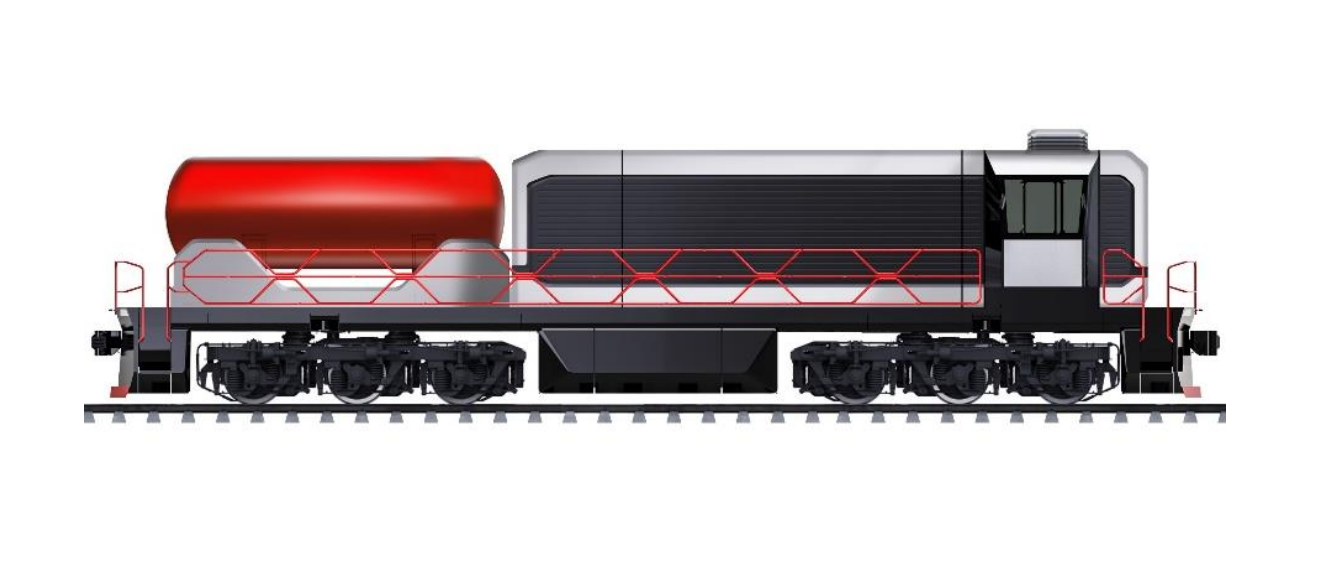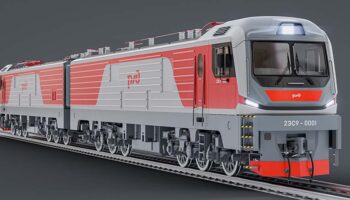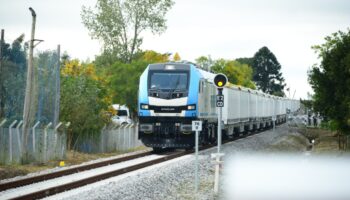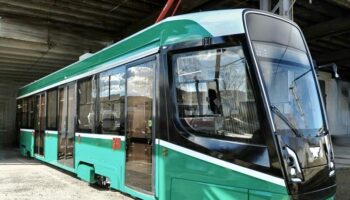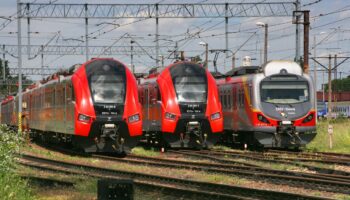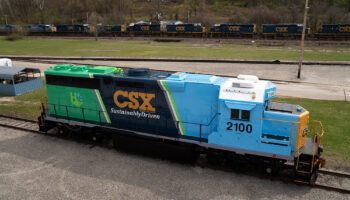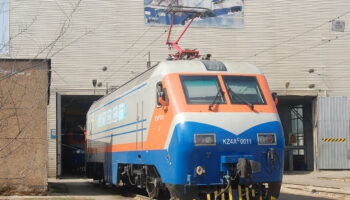Russia: The manufacturer commented on this to the Izvestia media. The extension of the state support programme for the natural gas fuel market until 2030, which the government is currently working on, is to add to the demand for vehicles.
TMH has been developing a six-axle TEM29 shunter for several years. This will be the second version of the shunting vehicle with a liquefied natural gas (LNG) reciprocating engine developed by the manufacturer. The first model, the TEM19 shunter, was produced in 2013 only as a prototype and currently it is operated by Russian Railways (RZD) at the Egorshino station in the Sverdlovsk region. In 2021, TMH pointed out in a commentary to the Railway Equipment Journal that the vehicle did not go into series because of the Ukrainian traction equipment and the identified need for a larger fuel tank.
The key component of the TEM29 is the 9GMG gas engine-generator. TMH now reports that it has already passed the full test cycle. The power output of this V8 engine is 940 kW, the specific gas consumption at full power is stated at the level of 207+10.35 g/kWh. As Vyacheslav Sheremetiev, Technical Director of the Kolomensky Zavod (part of TMH), which is building the engine, pointed out to the Gudok newspaper in 2019, the 9GMG project has been tasked to be unified with the size range of engines that the plant produces. “The level of unification of this engine with serially produced D49-type diesels is about 90%, which will enable the production of these engines in a single process stream”, he said.
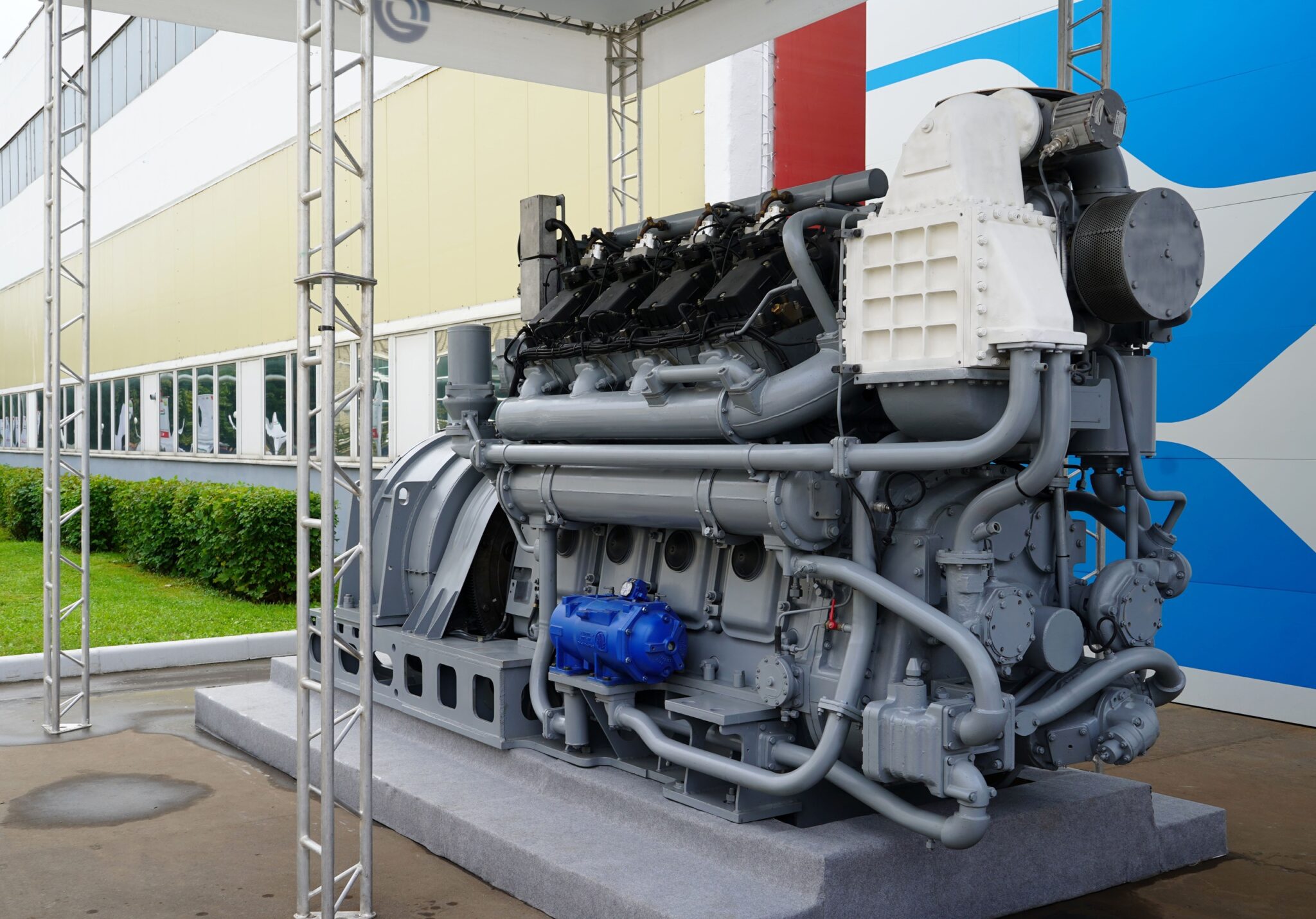 9GMG gas engine-generator at PRO//Motion.Expo, 2021. Source: Kolomensky Zavod
9GMG gas engine-generator at PRO//Motion.Expo, 2021. Source: Kolomensky Zavod
Another locomotive, the 3TE30G mainline gas vehicle, is to be a modification of the promising 2TE30 diesel locomotive, which is also in development at TMH for the needs of the eastern part of the RZD’s network. In 2021, Deputy CEO and Head of the RZD Traction Directorate Oleg Valinsky showed a rendering of the 3TE30G project at the PRO//Motion.Expo exhibition. It showed that the middle section is planned to be used entirely for the LNG tank.
A 16GDG gas engine-generator is being created for this locomotive. It is continuing the TMH’s range of D300 engines and assumes technological and operational unification with the 16LDG220 diesel generator. The V16 gas engine should have a rated power of 3,600 kW. TMH’s engine construction design office also points out that the engine will feature a newly developed high-voltage traction generator. TMH told Izvestia that the first prototype of 16GDG is scheduled to be produced by the end of this year. In turn, 16LDG220 has already been created and was demonstrated to RZD’s CEO Oleg Belozerov in August 2022.
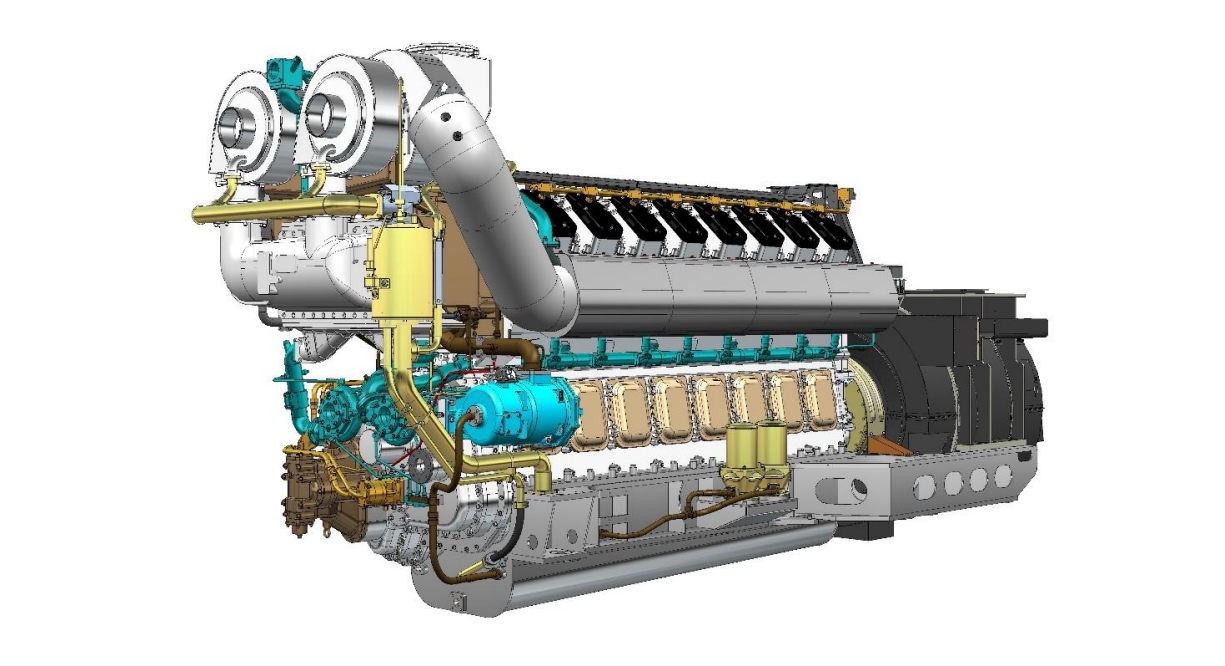 Project of the 16GDG gas engine-generator for 3ТE30G mainline LNG locomotive. Source: TMH
Project of the 16GDG gas engine-generator for 3ТE30G mainline LNG locomotive. Source: TMH
Competing solutions are offered by another Russian manufacturer, Sinara Transport Machines (STM). Thus, the TEMG1 gas locomotive, which was first presented in 2019, officially went into pilot and operation in September 2022 on the tracks of the Gazpromtrans branch in the Orenburg region. Its capacity is 824 kW, but according to Mikhail Chernyshev, head of Gazpromtrans’ centre of competence for gas locomotives, a promising development to 1,470 kW is being considered.
The gas modification also includes another STM project – the 2TE35A mainline diesel locomotive. In addition, the GTEM1 gas turbine mainline vehicle is under development as it was included in the contract between STM and Gazpromtrans for the serial LNG locomotives supply signed in 2018. STM stated that it would use two gas turbines based on the 800 kW GTD-1250 gas turbine engine (manufactured by UEC-Klimov).
As Vitaly Markelov, Deputy Chairman of Gazprom’s Management Board pointed out at last year’s St. Petersburg International Economic Forum, the company have plans to buy 51 shunting gas locomotives and 33 mainline ones from TMH and STM by 2028. Gazprom itself is planning to set up corresponding natural gas liquefaction facilities and servicing depots.
Meanwhile, as Oleg Valinsky noted in a recent column in Gudok, projects are also being developed to overhaul the TEM18DM shunters and the 2TE116U mainline locomotive for the LNG traction. The RZD’s R&D centre, VNIKTI, previously reported them being in the works. In its turn, in early 2022 Yakutia Railways planned to purchase US locomotives using a diesel-LNG mix, but Progress Rail, the only bidder, was not ready to deliver them at the required price.
The introduction of LNG is being actively promoted in Russia as a more cost-effective alternative to diesel in several regions of the country, and as a way for reducing emissions. At the same time, the lack of refuelling capacity remains a constraint on the introduction of such traction. According to Izvestia, the Russian Ministry of Energy has launched work to update the concept for developing the natural gas fuel market in the country, with an increased focus on securing demand for methane on rail and river transport. The work is carried out within the framework of extending the state support programme for the natural gas fuel market until 2030. A proposal to create such a programme for 2024-2030 was sent to Russian President Vladimir Putin in January by Viktor Zubkov, Chairman of Gazprom’s Board of Directors. As to Izvestia, the document is being examined by the Russian government now.



